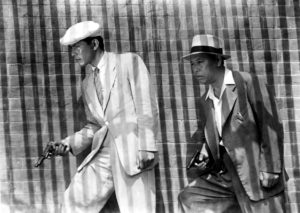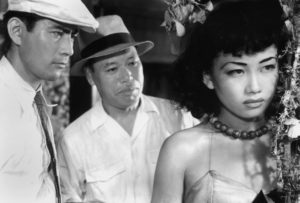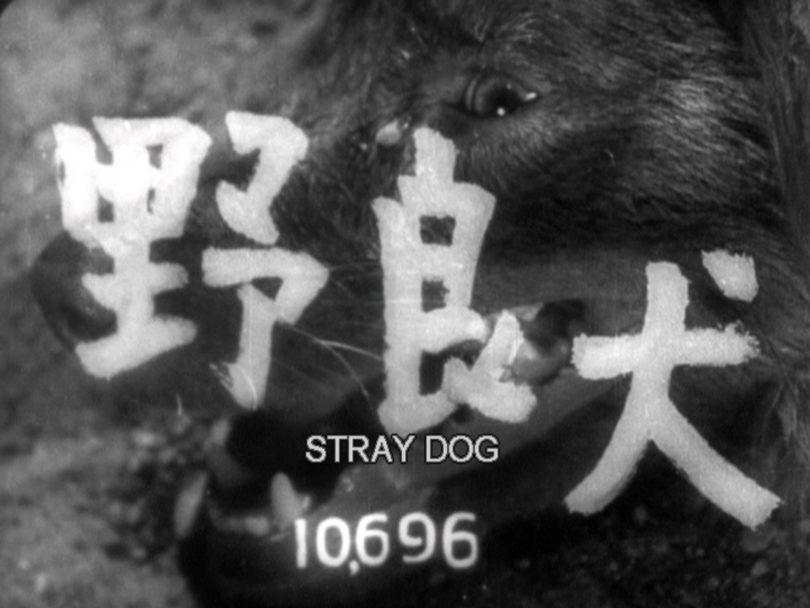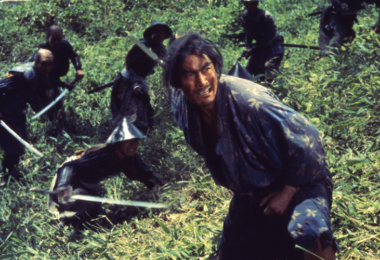“It was an unbearably hot day” – Stray Dog (1949)
This week I’m taking a look at Stray Dog, the seventh film in director Akira Kurosawa’s body of work.
Stray Dog was released in 1949. A straight detective drama at first glance, the movie opens on a hot and crowded bus with our protagonist, Murakami, a veteran of the war turned rookie homicide detective. While riding the bus, Murakami is pickpocketed, losing his gun. This sets the detective off on a journey which takes him through the back alleys and black markets of a postwar Japan.

Stray Dog (1949)
Going undercover as a down and out war veteran, our hero Murakami, portrayed by Toshiro Mifune, explores and experiences the sights, smells, and unrelenting heat of the black market. On the surface, his demeanor is that of a nervous rookie cop. But something remarkable happens in this picture that reshapes the entire landscape of the film. Near the half-way point, we discover that Murakami’s pistol had been sold to Yusa, a war veteran who has resorted to crime to cope with his misfortune and bad luck since returning home.
What I particularly love about this film is what Kurosawa does with the long (sometimes painfully long) montages of Murakami scouring the back alleys. In them, the famed director establishes Murakami and the path he could’ve been on. Toshiro Mifune is not chasing some criminal in this film, he is chasing himself, or at least a version of himself that could’ve been had he not chosen a life on the right side of the law. This piece of character development really drives home the brilliance that director Akira Kurosawa brings to all of his stories and why he is one of the titans of cinema.
Speaking of the director, Kurosawa spends a great deal of time wonderfully creating the impression of heat and frustration in this film. Throughout the picture, we as the audience are constantly reminded of the heatwave gripping Japan. Starting with the credits superimposed over a shot of a painting dog to every member of the film looking exhausted and beat down. These images serve to help to create a mood and feel of desperation. You can read it over the faces of every character. I believe Kurosawa did this to showcase the feeling of displacement that was felt by the Japanese following the war.

Stray Dog (1949)
So is this film a by-the-numbers detective drama? Yes, but it’s so much more. It’s the tale of two men who are undeniably similar with regard to the choices they made in life but, possibly as a result of fate, ultimately ended up on different paths. To quote the film, “Bad luck either makes a man or destroys him.” Murakami chooses to look at bad luck as an opportunity. Yusa, on the other hand, saw it as a death sentence.
5 out of 5


